To be honest, I was very leery of aquafaba at first. I’m not a fan of bean-based baked goods, so the idea of using bean liquid didn’t really appeal. But I couldn’t resist the science behind it and decided to experiment. It didn’t take long for me to understand the hype behind this odd but effective egg substitute. In fact, it’s become my go to when baking vegan. To help you enjoy the magic of aquafaba, I’ve created this extensive guide with frequently asked questions, tips, and step by step pictures. And of course, it includes the basics on how to make aquafaba, with a quick recipe!
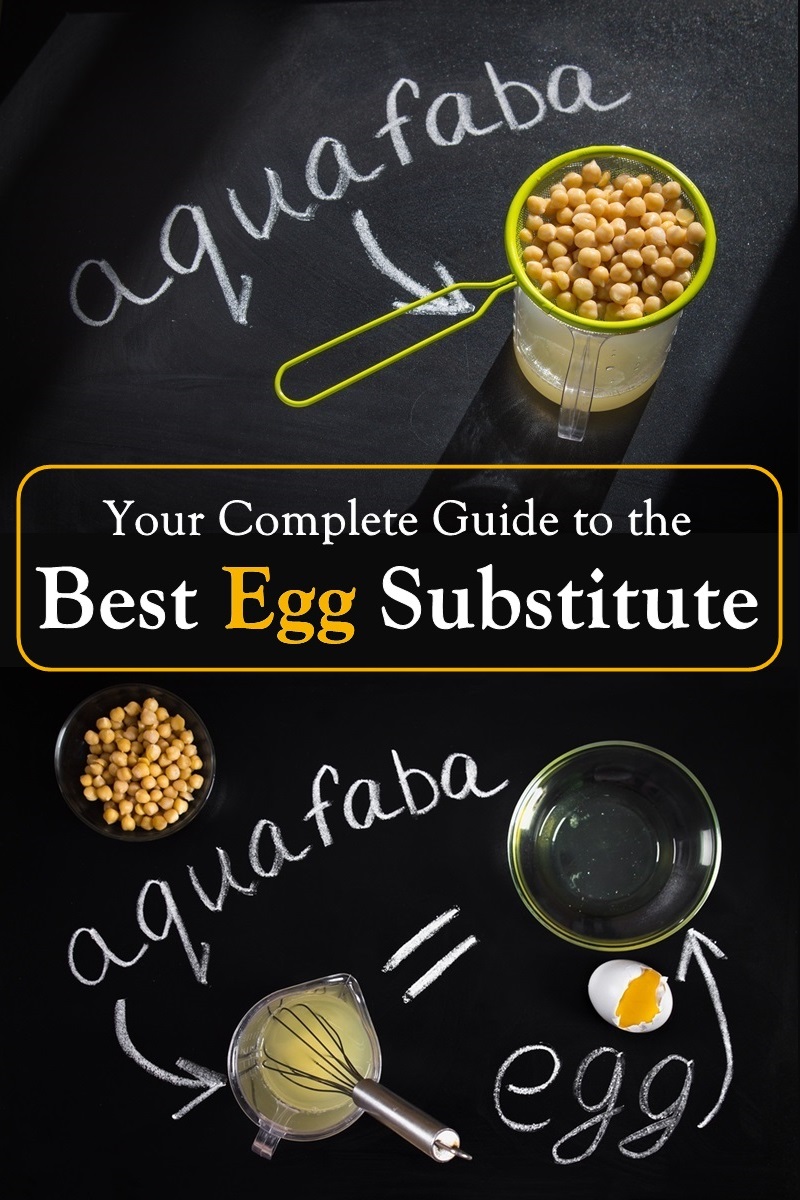
How to Make Aquafaba & FAQs for this Vegan Egg Substitute
Eggs are not dairy, so some of you might be wondering why I am covering this egg substitute here on Go Dairy Free. First, eggs are the most common secondary allergen for people with milk allergies. Second, many dairy-free consumers are also vegan or like to experiment with plant-based options. Third, you might need to bake for someone who is on an egg-free diet. Fourth, sometimes you just run out of eggs! All combined, it means that a lot of Go Dairy Free viewers need or want egg-free options. And this is one of the best egg substitutes I’ve tested.
Aquafaba FAQs
What is Aquafaba?
It’s the viscous water in which legumes, like chickpeas, have been cooked. It’s often referred to as “bean liquid” or “bean water.” During the legume cooking process, proteins, carbohydrates, and other water soluble plant solids migrate into the cooking water. It results in a thick, slightly gelatinous liquid that has properties similar to egg whites.
How Do I Make My Own Aquafaba from Scratch?
Rinse 1 cup dry chickpeas. Place them in a large bowl, cover with water, and let soak for 8 hours or more. Drain and rinse the chickpeas, and place them in a medium saucepan. Add 3 cups water and bring the chickpeas to a boil. Reduce the heat and simmer for about 45 minutes. Skim any foam that forms. Turn off the heat, and let the chickpeas sit for 1 hour. Strain the liquid (aquafaba) into a container and let cool. Refrigerate the aquafaba. It will set up more as it cools. This makes at least 1 cup of aquafaba. If it is too thin, see below. You can use the chickpeas in another recipe.
Do I Have to Make My Own Aquafaba?
A lot of people swear by the process of cooking their own beans. They say that the resultant aquafaba is superior. But many use the bean liquid from canned beans with stellar results. In other words, the bean liquid from canned beans works just fine.
Can I Use the Aquafaba from Any Beans?
Technically, you can use the liquid from any legume. Chickpeas have become the default aquafaba legume for a few reasons. One is that the liquid from cooked chickpeas is clear with a yellow tinge. It looks very similar to egg whites, and does turn white when whipped. Many other beans have murky or a more deeply colored bean liquid. Chickpea liquid also tends to be relatively reliable in thickness, and often produces the best results when whipped. Finally, many of us just love chickpeas and always have some on hand. But when I made the Chipotle Black Bean Burgers recipe in my cookbook, Eat Dairy Free, for example, I just use a little of the leftover black bean liquid as a binder. The color isn’t an issue in that recipe, so there is no reason to open a whole can of chickpeas!
What If the Aquafaba is Too Thin?
If the bean liquid appears too watery, you can reduce it on the stove top. Simply simmer it in a pan over medium-low heat until it has thickened to more of a runny egg white consistency. This is cooked liquid, so there is no harm in cooking it a little more. But let it cool completely before continuing with your recipe.
Does it Taste Beany?
The first time I whipped chickpea aquafaba I was scared because it smelled very beany. The taste was a touch pronounced, but it seemed to mellow and meld nicely once sweetened or added to a recipe. No one noticed any beaniness in the aquafaba meringues I made, which contained just chickpea liquid, sugar, and vanilla. But the flavor could vary based on the type of bean liquid that you use and if it is salted or unsalted.
How Much Aquafaba Equals 1 Egg?
Use a full 3 tablespoons of aquafaba per 1 large egg. Use 2 tablespoons of aquafaba per 1 large egg white.
Can I Use Aquafaba to Replace Eggs in Any Recipe?
It has emulsifying, binding, thickening, and even rising properties. So bean liquid seems invincible as an egg substitute. And it does work well in almost all baked recipes, including as an egg wash. But it isn’t the best stand-alone egg substitute for scrambles, quiches, egg salads, or other applications where egg yolks are integral. But it can still be a helpful component in some of these recipes. For example, I use aquafaba in the Impossible Vegan Quiche recipe in my cookbook, Eat Dairy Free, but I don’t rely on it alone for the structure.
Aquafaba does work in recipes that call for several eggs or egg whites, but the results can vary. They don’t have as tight of a structure as eggs so things like angel food cake won’t be quite as fluffy.
Do I Have to Whip Aquafaba?
You only need to whip it if your recipe calls for whipped egg whites. Otherwise, you can use the bean liquid as is. If you do need to whip the egg whites, see my step-by-step visual and recipe below for How to Make Aquafaba.
Should I Use Salted or Unsalted Beans?

Do I Need to Refrigerate the Aquafaba First?
I was once told to refrigerate it first, but have never seen any difference in the results. Room temperature chickpea liquid will still whip nicely and should work in recipes just fine.
Help, I used Aquafaba and my Cake / Muffins / Cupcakes Collapsed! What happened?
As mentioned above, the structure of bean liquid doesn’t set up quite as firm or quickly as eggs. So if your baked goods rise too quickly or too boisterously, or without enough other binders, they can essentially “pop” and collapse.
Look at your baked good half way through baking (through the glass). If it simply isn’t rising, you might need a little added leavener. If it has risen nicely, but then sinks once done, you’ve had a collapsing issue. In these cases, reducing the leavener and/or using more binding ingredients can help to solve the problem. This issue is even more common with gluten-free baked goods, which tend to be more fragile.
How Can I Store Leftover Aquafaba?
It can be refrigerated in an airtight container for at least a few days. But many people opt to freeze the leftover bean liquid for extended storage. I recommend creating 1 tablespoon (measured) frozen cubes. This way you can defrost as may cubes as you need at a time: 2 tablespoons per large egg white, 3 tablespoons per whole large egg.
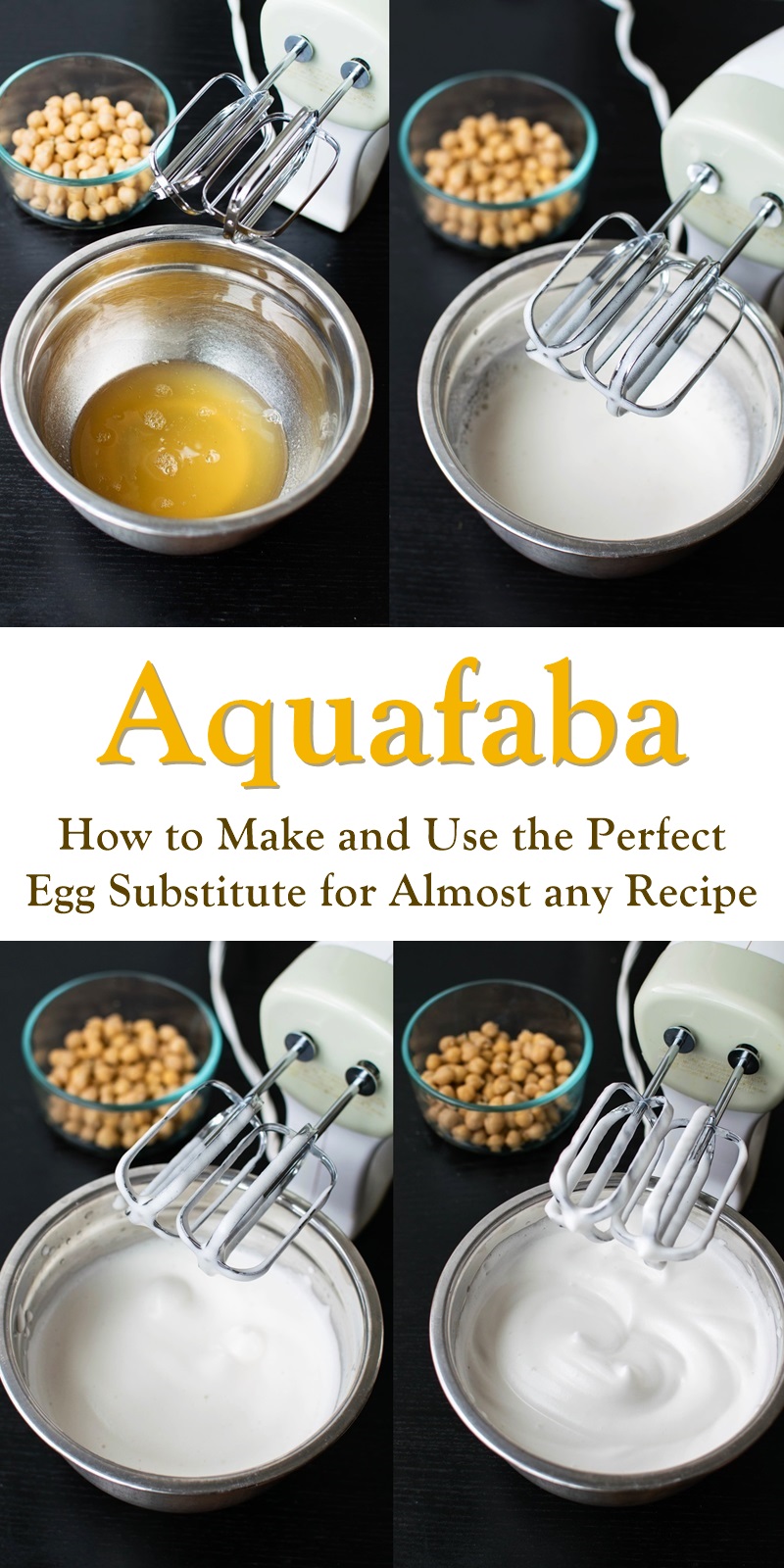
How to Make Aquafaba (Step by Step Pictures)
As mentioned above, you don’t need to whip aquafaba for all recipes. When asked how to make aquafaba, I usually just respond “drain, measure, and add to your recipe!” But when your recipe calls for whipped egg whites, you must whip the aquafaba.
Bean liquid takes longer to whip than egg whites, so it requires a little patience. If you have a stand mixer, this is a good time to use it. Drain a can of chickpeas into a mixing bowl. This should yield about 1/2 cup of aquafaba. If your recipe calls for cream of tartar, you can add it now.
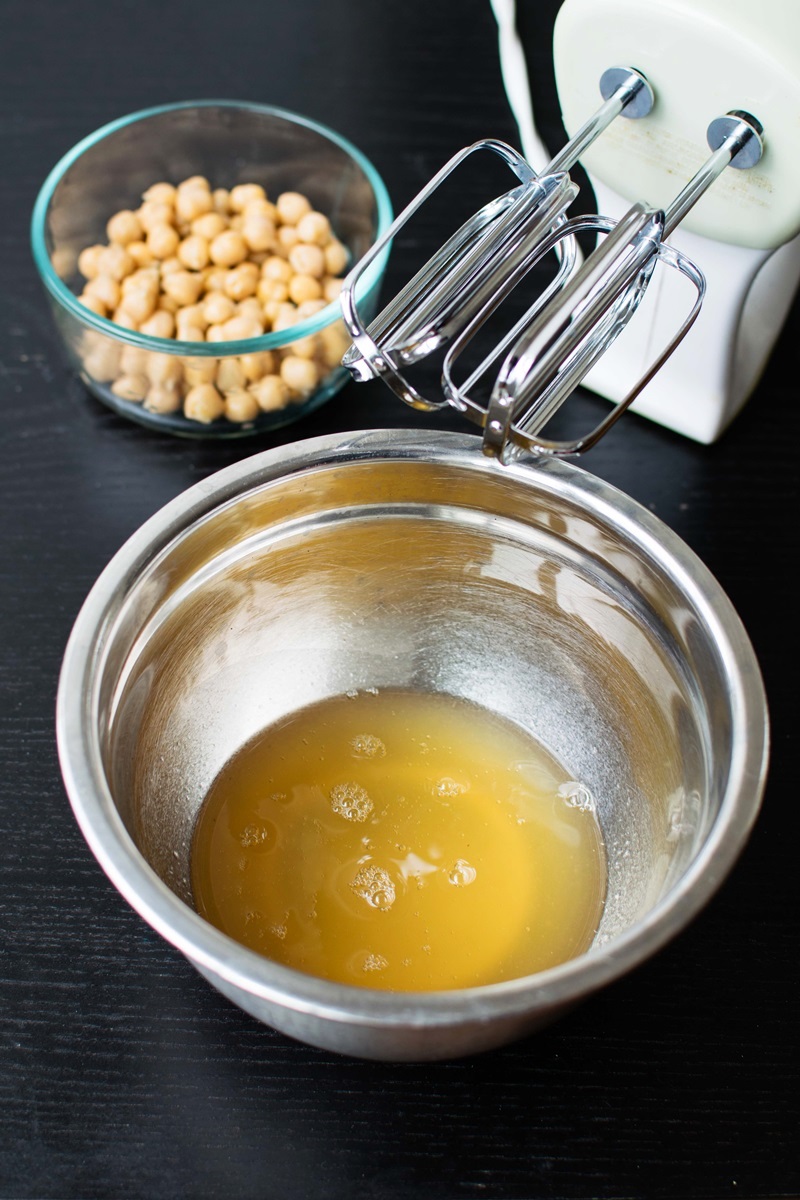
Begin mixing on low speed. It will become foamy within the first minute. Contrary to belief, bean liquid was found to be extremely low in saponins. So what causes it to foam isn’t completely known.
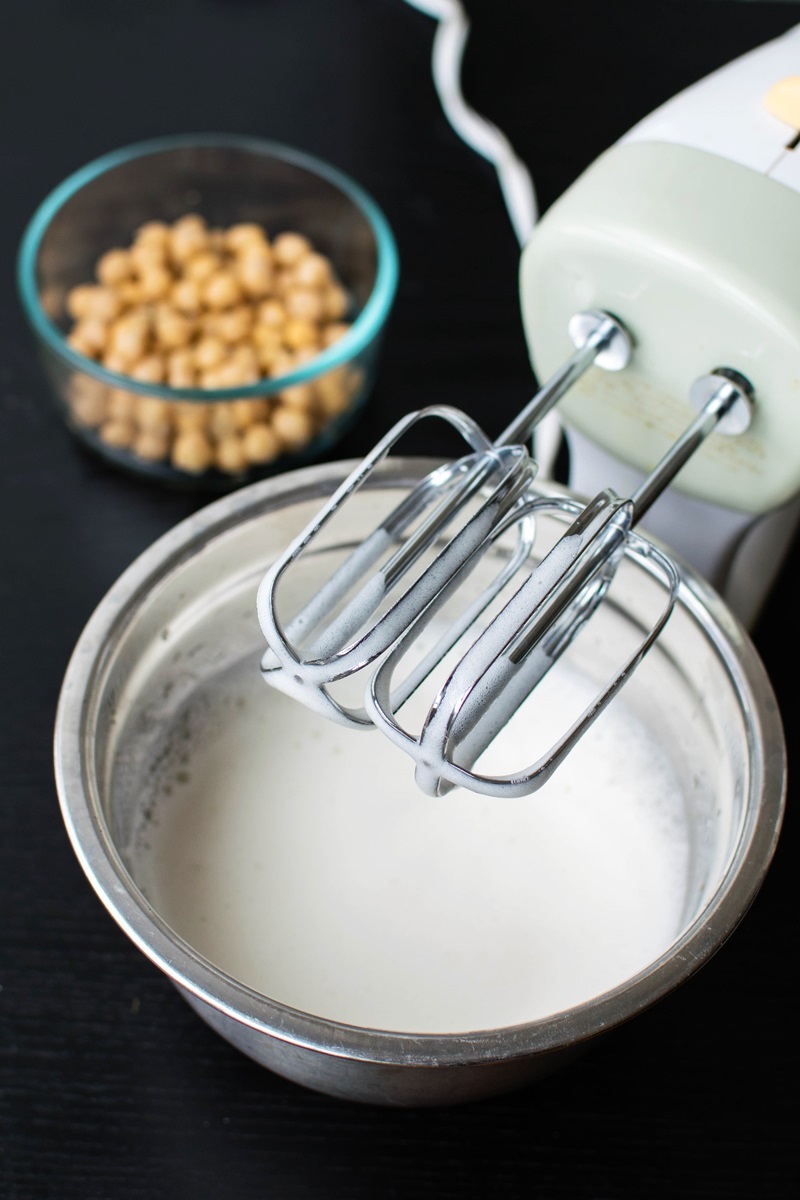
At 3 to 4 minutes, it should start to look just a little thicker, almost like a fluid cream but not as rich. You can turn the mixer speed up to medium, at this stage.
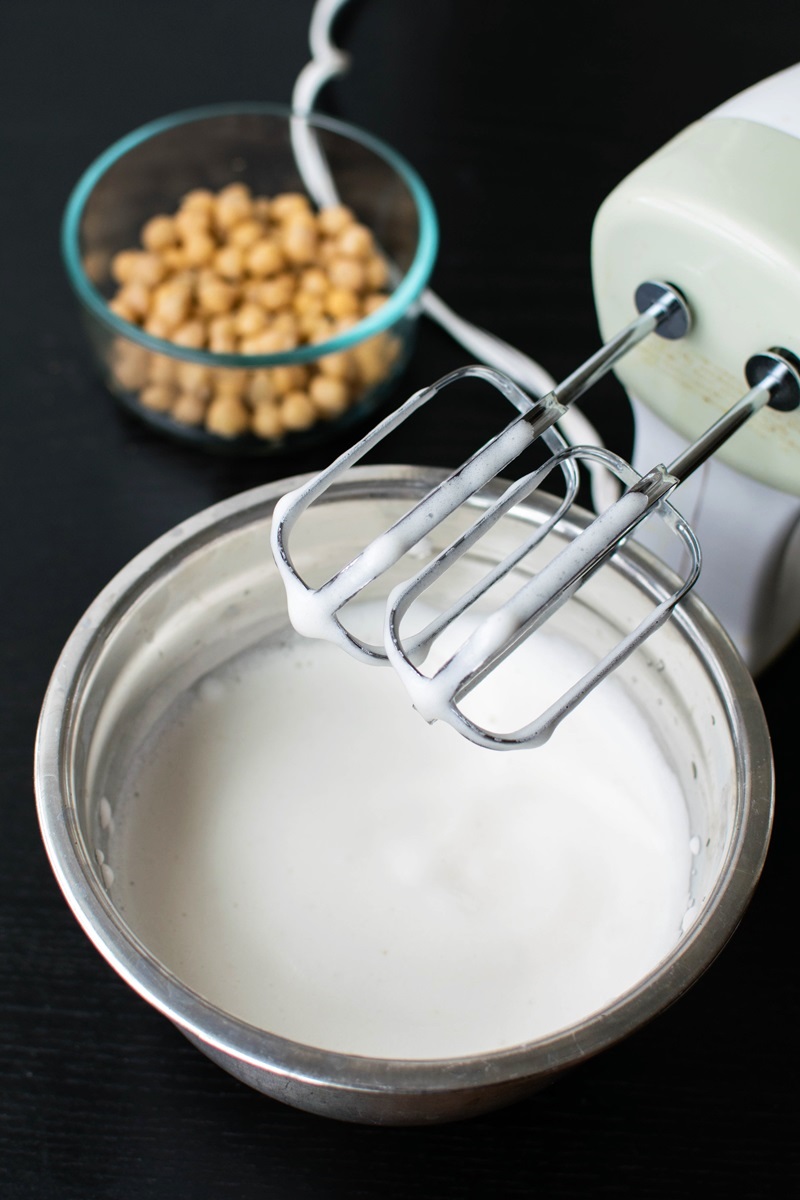
At 5 to 6 minutes, you will probably see it thicken to the soft peak stage. When you remove the mixer, soft little mounds will remain.
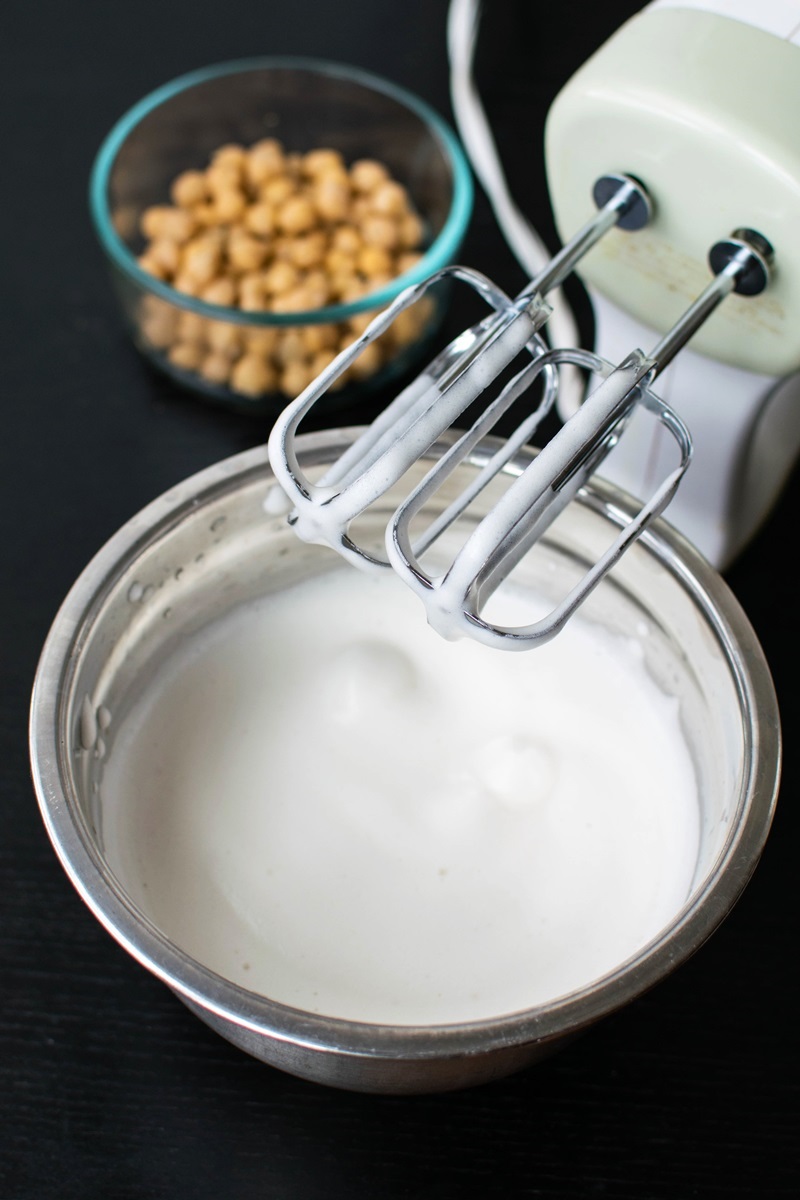
At 7 to 10 minutes, it will finally reach the firm, semi-stiff, or stiff peak stage. If your starting bean liquid was a little thin, these stiff peaks might not seem quite as stiff as whipped egg whites. But it still works well in recipes. As a benefit, aquafaba doesn’t overwhip as easily as egg whites. So it’s okay to whip a little longer if your goal is the stiffest peaks possible.
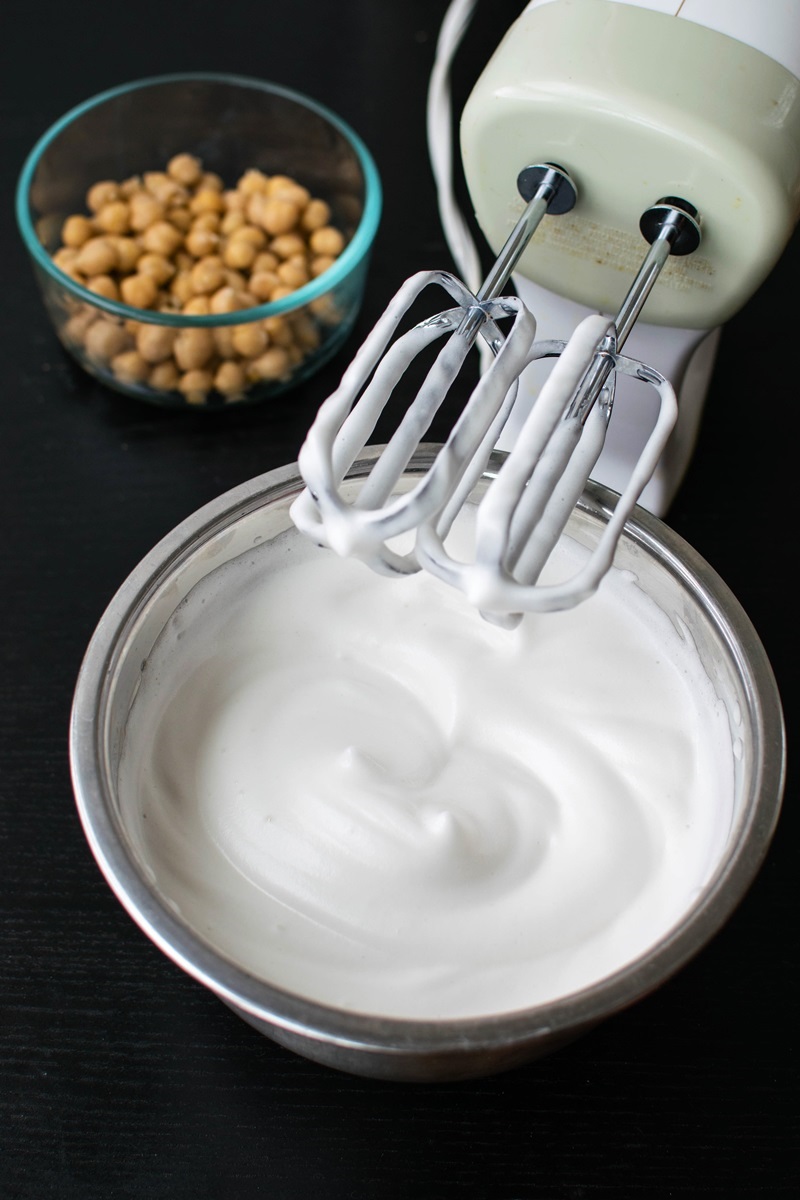
At this point, you can follow your recipe and fold the “whites” into your recipe or blend in other ingredients. Here I blended in sugar and vanilla bean paste to make meringues.
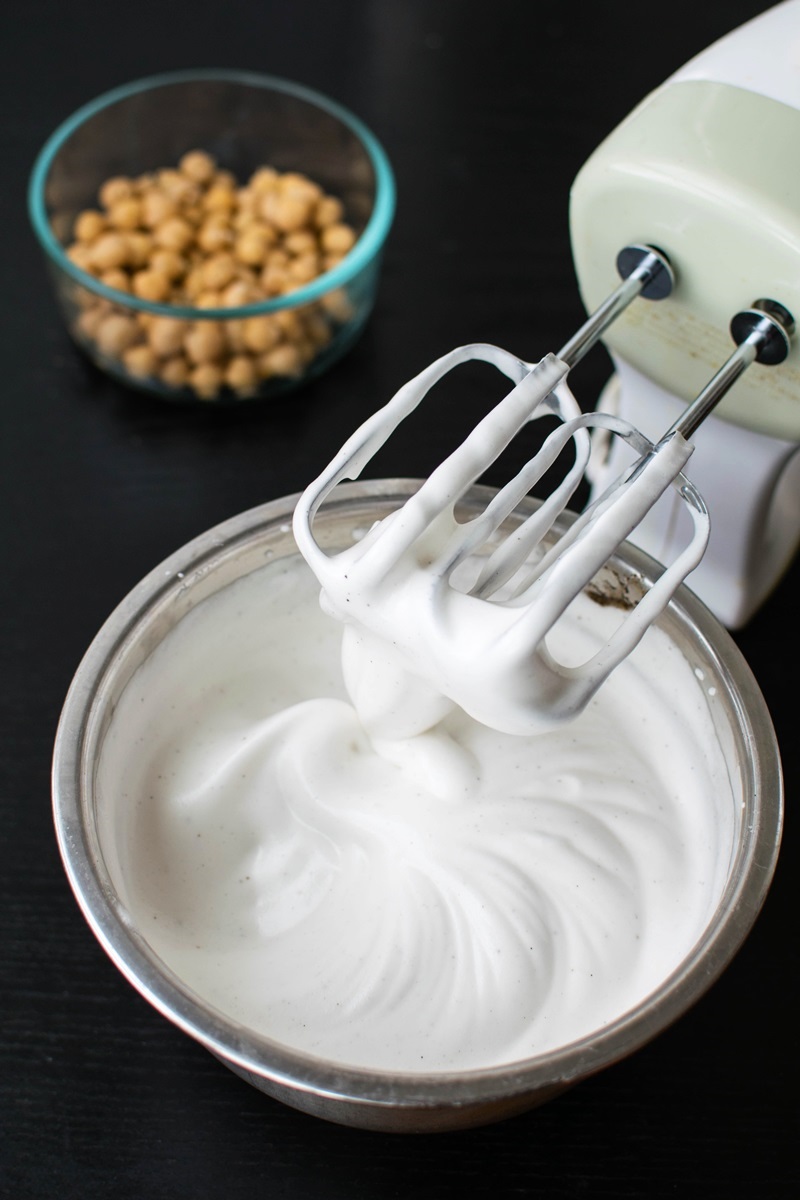
Special Diet Notes: Aquafaba
By ingredients, this recipe is dairy-free / non-dairy, egg-free, gluten-free, grain-free, nut-free, peanut-free, soy-free, vegan, plant-based, vegetarian, and top food allergy-friendly.
- 1 (15-ounce) can chickpeas (see post above about other legumes and home cooked chickpeas)
- Drain the chickpea liquid into a container. Use 3 tablespoons of the liquid per whole large egg called for in your recipe. Use 2 tablespoons of the liquid per large egg white called for in your recipe.
- Store leftovers in an airtight container in the refrigerator or freeze to use later.
- Drain the chickpea liquid into a mixing bowl. Reserve the chickpeas to enjoy in another recipe.
- If your recipe calls for cream of tartar, add it now.
- Begin mixing the liquid on low speed with a hand mixer or stand mixer. It will start to foam very quickly. After a few minutes it will begin to thicken.
- Optionally turn the mixer up to medium speed. It will continue to thicken, and will usually reach the stiff peak stage at about 7 to 10 minutes.
- Now use the whipped aquafaba in place of whipped egg whites in your recipe. This usually means folding it into your batter, or mixing in additional ingredients.
A Dozen Vegan Recipes Using Aquafaba
- Classic Vegan Waffles
- Basic Vegan Sugar Cookies
- Gingerbread Pumpkin Pie
- Slow Cooker Vegan Pecan Loaf
- Gingerbread Cupcakes
- Tunnel of Fudge Cake
- Horchata No-Churn Vegan Ice Cream
- Air Fryer Onion Rings
- Crackly Brownies
- Vegan Tres Leches Cake
- Peanut Butter Blondies
- Chai Spiced Pumpkin Cake
More Great Egg-Free Resources
Go Dairy Free: The Guide and Cookbook (egg-free options for every recipe)
Eat Dairy Free: Your Essential Everyday Cookbook (egg-free options for every recipe)
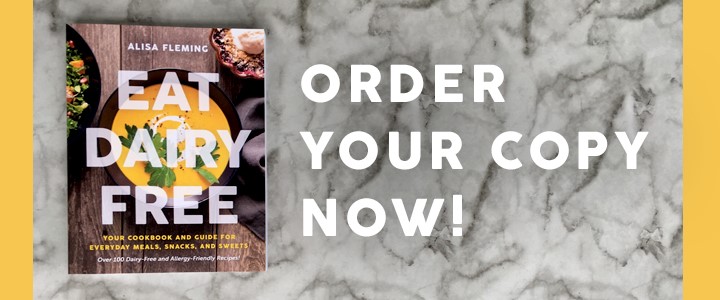


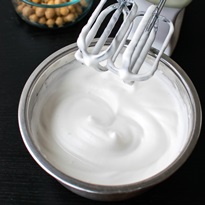
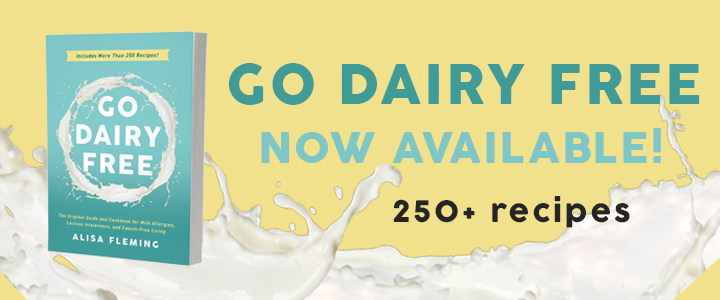
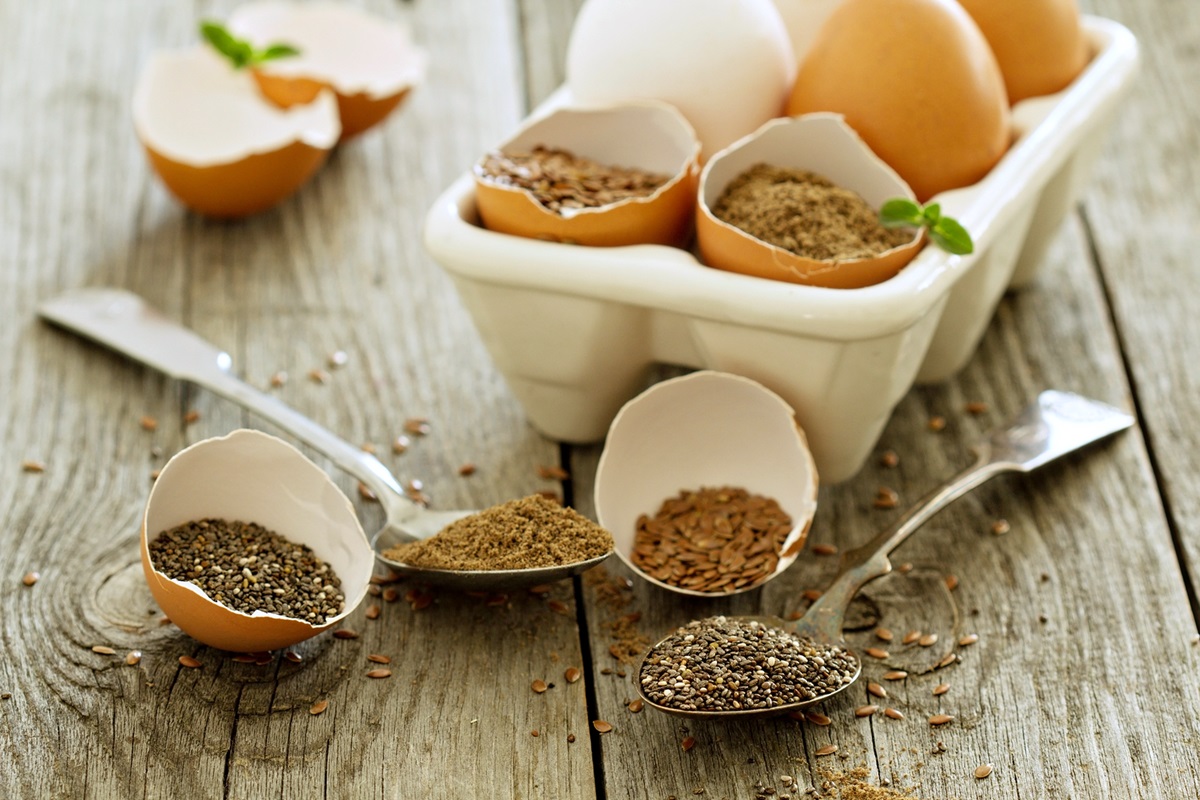
58 Comments
I did exactly as you said, whipped the aquafaba and for 10 minutes but it never got thick as shown in your photo. What happened, why did it not firm up? Thank you for your help.
While quite informative on how to whip aquafaba, I was disappointed that the article never delivered on its title on how to actually *make* aquafaba other than to just say to open a can. You tantalized me with “a lot of people swear by the process of cooking their own beans. They say that the resultant aquafaba is superior,” and I was hoping that you would provide instructions and tips on doing exactly this. Things like soaking/rinsing procedure, ideal ratios of water to dry chickpeas, any additives that might help, cooking temperature and time, whether to use a pressure cooker, how long to let it sit afterwards, etc. I’d always assumed that the canned aquafaba was partly the result of it sitting in the can for an extended period, but maybe that’s not the case. Also, canned chickpeas are usually not fully cooked. Does that make for better aquafaba? I actually landed on your site because I’ve been playing around with making vegan ice cream and wondered if aquafaba might be of use. So far, I’ve only found it used in “no churn” recipes, including here, but I may experiment with churning it anyway. I’m sure I can find more info about actually making aquafaba (from dried legumes) online. Perhaps you can post an article (or addition) about doing just this.
I’ve added that information. Because it is such a time consuming process, most people prefer to use canned. The instructions I’ve included above do use a standard ratio, but if your aquafaba is too thin, it can be boiled down, if it’s too thick, you can thin it with water. It’s really just about cooking the chickpeas. Undercooked chickpeas could produce thicker aquafaba, in theory, as the chickpeas sit in the liquid. I’m not sure on the science of that. But I’m not personally in the camp that freshly made aquafaba is better either. I’ve used both, and homemade is just more finicky because I often have to boil it down more. I think it would work well in churn recipes.
This is all so helpful, thank you! My Son can’t eat eggs but ok with dairy and everything else. I’m trying to make frangipane for the base of a tart but without the egg. Can I just substitute the egg with aquafaba and follow the normal recipe?
Hi Carole, it should work fine, but won’t quite provide the richness the the cream that regular eggs do, since it mimics the whites, not the yolks.
Hi! I came across this post when looking for an egg substitute for meatloaf. Super informative! Have you used it with any success? Thanks in advance!
Yes, it works great!
Of I can’t find unsalted chickpeas to use the Aquafaba in a recipe…should I plot or reduce the Amount of salt?
It really depends on the recipe. It won’t typically add a significant amount of saltiness. I haven’t had to reduce the salt (I usually keep salted beans on hand, not unsalted), but if you feel your recipe will be negatively affected by a little extra salt, you might want to reduce it a smidgen.
Just wondering if there is a way to make aquafaba from chick pea flour?
I don’t believe so.
I was going to make macarons using aquafaba and was wondering if you have to use gel colouring? I’ve heard that water-based food dyes can react with the egg in the meringue and cause it to flatten but I wasn’t sure if it applied the same when using aquafaba.
Thank you 🙂
I have made vanilla aquafaba meringues with vanilla extract, and they do come out a little flatter. It’s always best to avoid liquid if you can. Powders work well, but you have to add more of them, since they aren’t as concentrated as gels, which can also weigh the meringues down. Gels are very concentrated, so you get a lot of color with a very small amount. That’s why many bakers prefer them with egg meringues, and they can have the same benefit with aquafaba meringues, in my experience.
What do you think of using flax and then the aquafaba for the water part of the mixture? Maybe binding and rising will work well together??
Flax will probably weigh it down. I like flaxseed, but am not personally a fan of it as an egg replacer. It adds a lot of density. But you can certainly try it!
Hi, if i want to use the aquafaba in granola as a sub for egg whites, do you have an idea of the shelf life?
Should it be refrigerated? I usually bag it, heat seal and i have a small store so it stays on the shelf. No fridge available.
thanks so much!
Hi Kristen the unrefrigerated shelf-life would be similar to other granola. Most fresh-based granola keeps for 1 to 2 weeks in an airtight container, but I’m not sure how much longer is typical for heat-sealed shelf life.